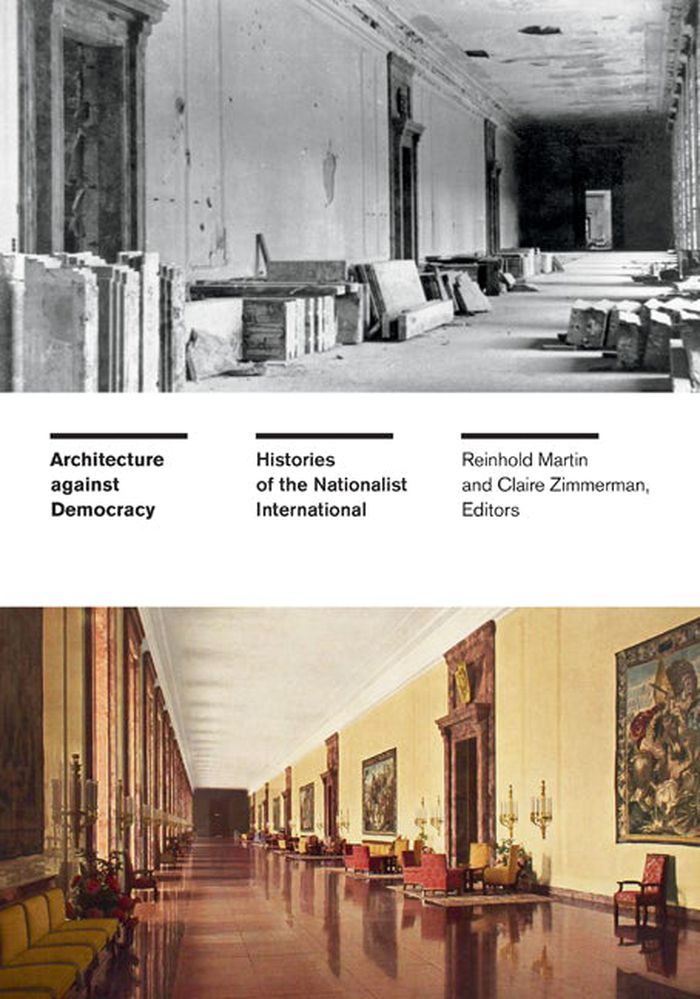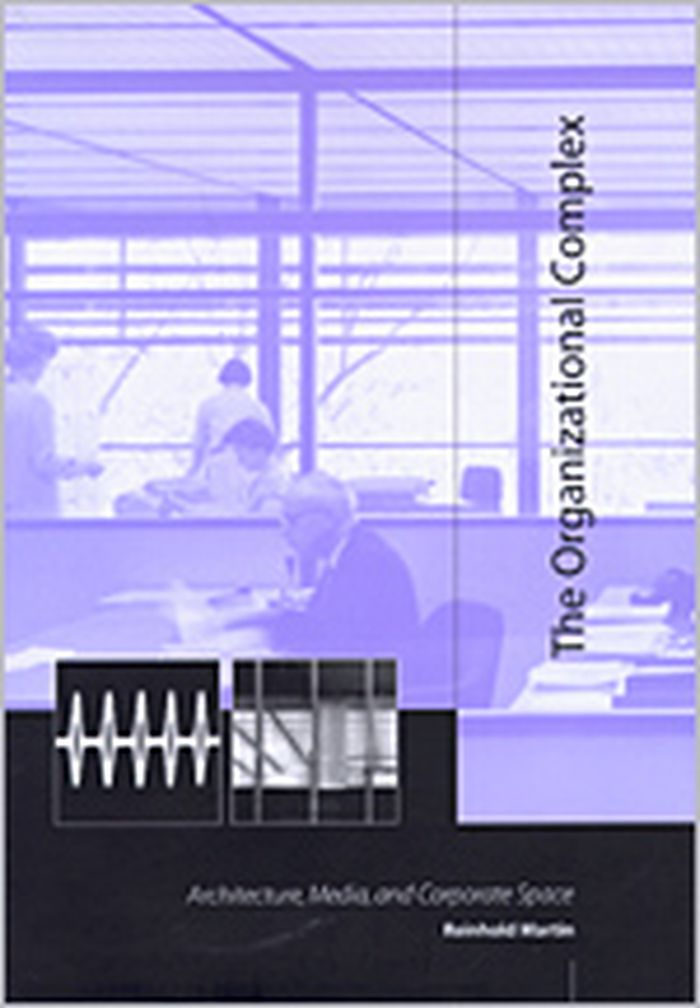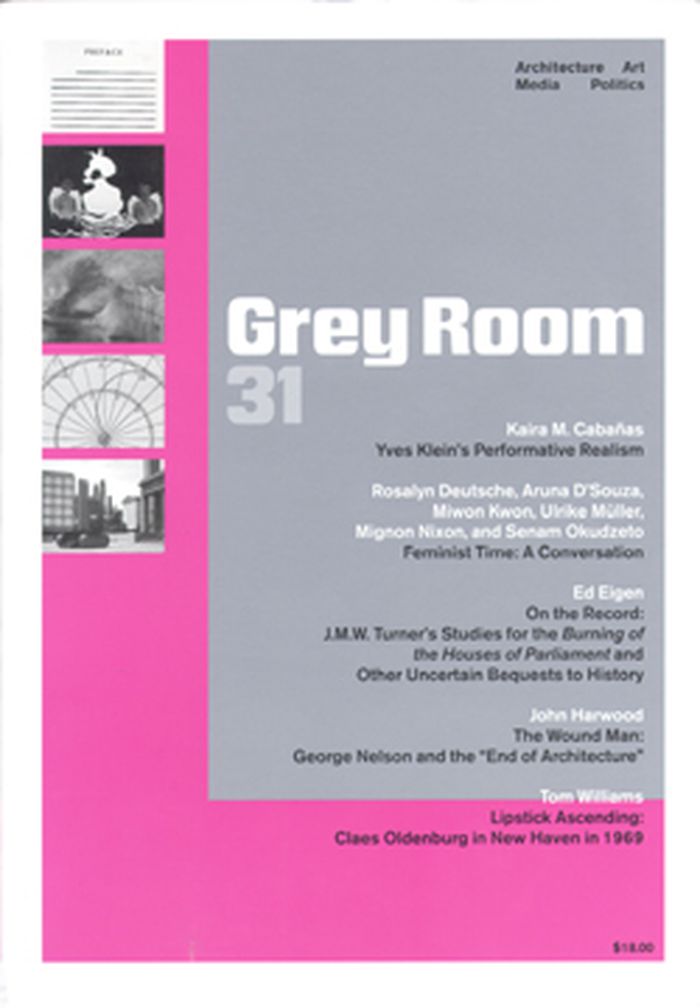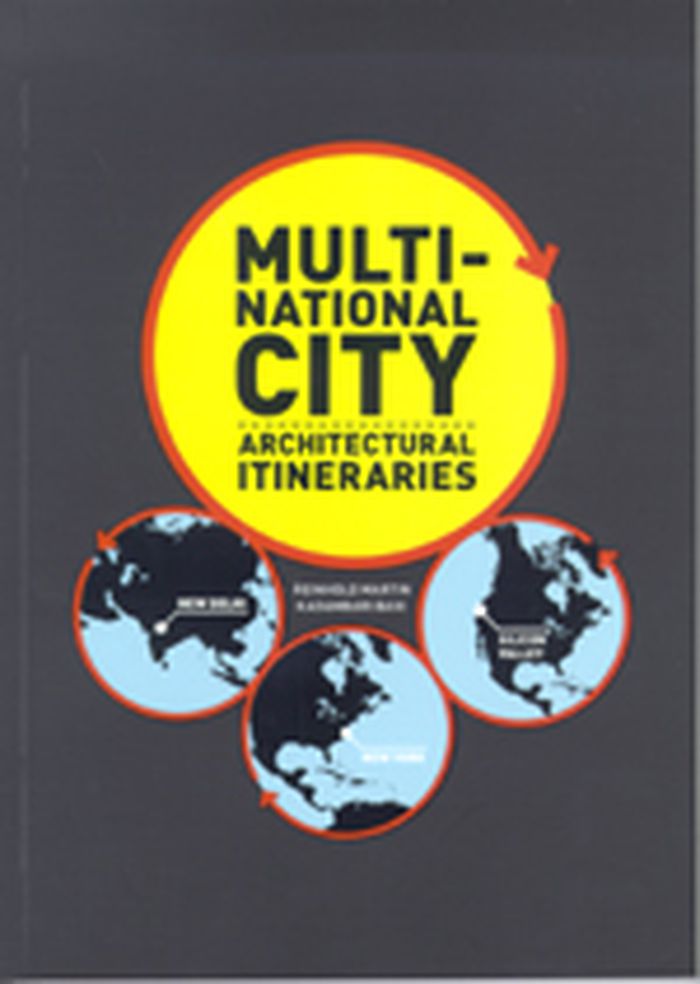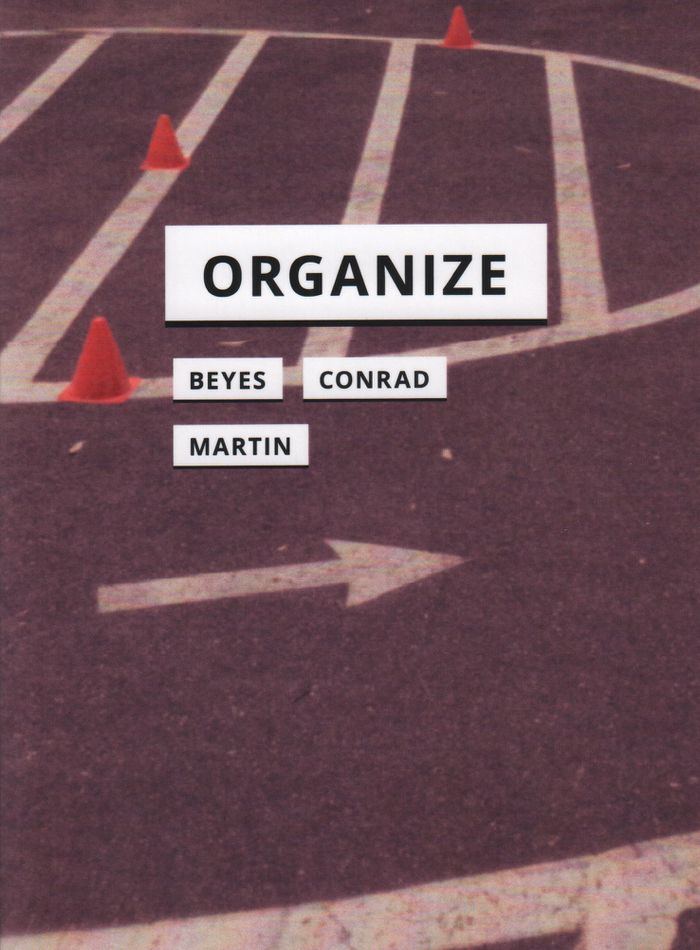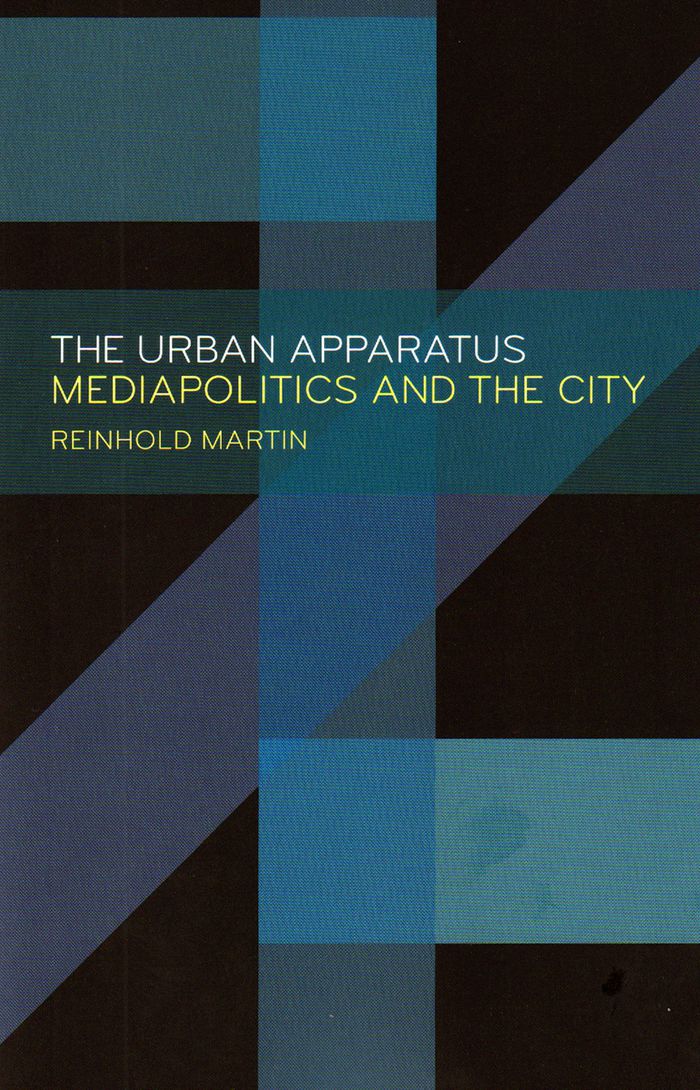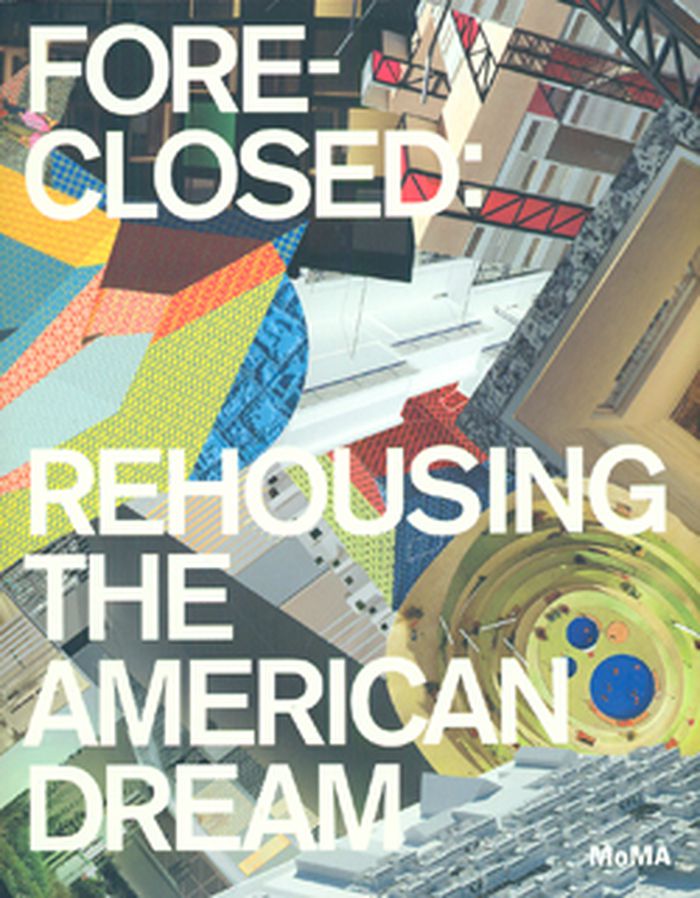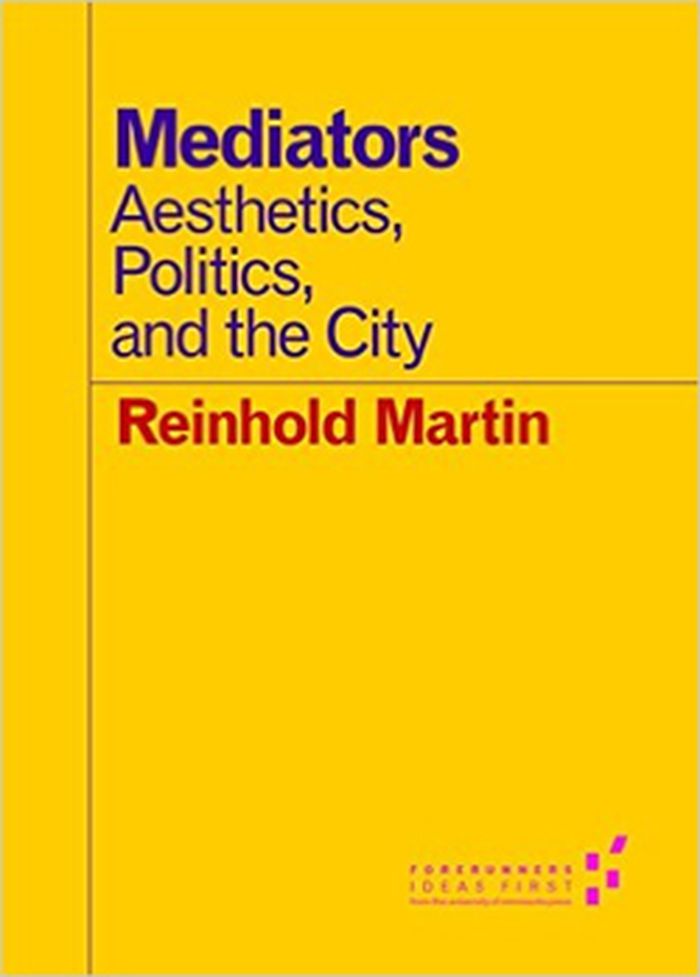$48.99
(disponible sur commande)
Résumé:
Reinhold Martin and Claire Zimmerman bring together essays from an array of scholars exploring the troubled relationship between architecture and antidemocratic politics. Comprising detailed case studies throughout the world spanning from the early nineteenth century to the present, "Architecture against Democracy" analyzes crucial occasions when the built environment has(...)
Architecture against democracy: histories of the nationalist international
Actions:
Prix:
$48.99
(disponible sur commande)
Résumé:
Reinhold Martin and Claire Zimmerman bring together essays from an array of scholars exploring the troubled relationship between architecture and antidemocratic politics. Comprising detailed case studies throughout the world spanning from the early nineteenth century to the present, "Architecture against Democracy" analyzes crucial occasions when the built environment has been harnessed as an instrument of authoritarian power. Alongside chapters focusing on paradigmatic episodes from twentieth-century German and Italian fascism, the contributors examine historic and contemporary events and subjects that are organized thematically, including the founding of the Smithsonian Institution, Ellis Island infrastructure, the aftermath of the Paris Commune, Cold War West Germany and Iraq, Frank Lloyd Wright’s domestic architecture, and Istanbul’s Taksim Square. Through the range and depth of these accounts, "Architecture against Democracy" presents a selective overview of antidemocratic processes as they unfold in the built environment throughout Western modernity, offering an architectural history of the recent "nationalist international."
Théorie de l’architecture
$51.95
(disponible sur commande)
Résumé:
"The Organizational Complex" is a historical and theoretical analysis of corporate architecture in the United States after the Second World War. Its title refers to the aesthetic and technological extension of the military-industrial complex, in which architecture, computers, and corporations formed a network of objects, images, and discourses that realigned social(...)
Théorie de l’architecture
juillet 2003, Cambridge, Massachusetts
The organizational complex : architecture, media, and corporate space
Actions:
Prix:
$51.95
(disponible sur commande)
Résumé:
"The Organizational Complex" is a historical and theoretical analysis of corporate architecture in the United States after the Second World War. Its title refers to the aesthetic and technological extension of the military-industrial complex, in which architecture, computers, and corporations formed a network of objects, images, and discourses that realigned social relations and transformed the postwar landscape. In-depth case studies of architect Eero Saarinen's work for General Motors, IBM, and Bell Laboratories and analyses of office buildings designed by Skidmore, Owings & Merrill trace the emergence of a systems-based model of organization in architecture, in which the modular curtain wall acts as both an organizational device and a carrier of the corporate image. Such an image--of the corporation as a flexible, integrated system--is seen to correspond with a "humanization" of corporate life, as corporations decentralize both spatially and administratively. Parallel analyses follow the assimilation of cybernetics into aesthetics in the writings of artist and visual theorist Gyorgy Kepes, as art merges with techno-science in the service of a dynamic new "pattern-seeing." Image and system thus converge in the organizational complex, while top-down power dissolves into networked, pattern-based control. Architecture, as one among many media technologies, supplies the patterns--images of organic integration designed to regulate new and unstable human-machine assemblages.
Théorie de l’architecture
périodiques
Grey room 32, summer 2008
$20.00
(disponible en magasin)
Résumé:
"Grey room" brings together scholarly and theoretical articles from the fields of architecture, art, media, and politics to forge a cross-disciplinary discourse uniquely relevant to contemporary concerns. "Grey room" features original articles, translations, interviews, dossiers, and academic exchanges Contributors to this issue : Mark Godfrey, Sven Lütticken, Pepper(...)
Revues
août 2008, Cambridge (MA)
Grey room 32, summer 2008
Actions:
Prix:
$20.00
(disponible en magasin)
Résumé:
"Grey room" brings together scholarly and theoretical articles from the fields of architecture, art, media, and politics to forge a cross-disciplinary discourse uniquely relevant to contemporary concerns. "Grey room" features original articles, translations, interviews, dossiers, and academic exchanges Contributors to this issue : Mark Godfrey, Sven Lütticken, Pepper Stetler, Juan Suárez.
périodiques
août 2008, Cambridge (MA)
Revues
Grey room 31
$20.00
(disponible sur commande)
Résumé:
Feature: Kaira M.Cabanas: Yves Klein's Performative Realism Rosalyn Deutsche, Aruna D'Souza, Miwon Kwon, Ulrike Müller, Mignon Nixon, and Senam Okudzeto: Feminist Time: A Conversation Ed Eigen: On the record: J.M.W. Turner's Studies for the Burning of the Houses of Parliament and Other Uncertain Bequests to History John Hardwood: The Wound Man: George Nelson and the(...)
Revues
mai 2008, Cambridge
Grey room 31
Actions:
Prix:
$20.00
(disponible sur commande)
Résumé:
Feature: Kaira M.Cabanas: Yves Klein's Performative Realism Rosalyn Deutsche, Aruna D'Souza, Miwon Kwon, Ulrike Müller, Mignon Nixon, and Senam Okudzeto: Feminist Time: A Conversation Ed Eigen: On the record: J.M.W. Turner's Studies for the Burning of the Houses of Parliament and Other Uncertain Bequests to History John Hardwood: The Wound Man: George Nelson and the 'End of Architecture'. Tom Williams: Lipstick Ascending: Claes Oldenburg in New Haven in 1969.
Revues
$37.50
(disponible en magasin)
Résumé:
"Multi-National city" follows three architectural itineraries through three cities and their histories. Like so many, these cities are caught within the feedback loops of globalization : Silicon Valley in northern California; New York's internal suburbias; and Gurgaon, a burgeoning corporate city outside of New Delhi. Each exhibits a distinct character, while together,(...)
Théorie de l’urbanisme
juillet 2007, Barcelona
Multi-national city : architectural itineraries
Actions:
Prix:
$37.50
(disponible en magasin)
Résumé:
"Multi-National city" follows three architectural itineraries through three cities and their histories. Like so many, these cities are caught within the feedback loops of globalization : Silicon Valley in northern California; New York's internal suburbias; and Gurgaon, a burgeoning corporate city outside of New Delhi. Each exhibits a distinct character, while together, they also form important nodes in what the authors describe as a single Multi-National city (MNC) stretching across the globe. The itineraries traced through them take the reader on a tour of the architectural monuments of corporate globalization-corporate campuses, high-rise towers, "public" atriums, call centers, and gated communities-that tracks their shared logic, their internal discrepancies, and their undeniable strangeness. Each itinerary concludes with an unannounced stop at an architectural project that applies the lessons of the Multi-National city to itself.
Théorie de l’urbanisme
Organize
$26.95
(disponible sur commande)
Résumé:
Media organize things into patterns and relations. As intermediaries among people and between people and worlds, media shape sociotechnical orders. At the same time, media are organized: while they condition different organizational forms and processes, they, too, are formed and can be re-formed. This intimate relation of media and organizing is timeless. Yet arguably,(...)
octobre 2019
Organize
Actions:
Prix:
$26.95
(disponible sur commande)
Résumé:
Media organize things into patterns and relations. As intermediaries among people and between people and worlds, media shape sociotechnical orders. At the same time, media are organized: while they condition different organizational forms and processes, they, too, are formed and can be re-formed. This intimate relation of media and organizing is timeless. Yet arguably, digital media technologies repose the question of organization—and thus of power and domination, control and surveillance, disruption and emancipation. Bringing together leading media thinkers and organization theorists, this book interrogates organization as an effect and condition of media. How can we understand the recursive relation between media and organization? How can we think, explore, critique, and perhaps alter the organizational bodies and scripts that shape contemporary life?
$33.00
(disponible sur commande)
Résumé:
Urbanization is a system of power and knowledge, and today’s city functions through the expansive material infrastructures of the urban order. In The Urban Apparatus, Reinhold Martin analyzes urbanization and the contemporary city in aesthetic, socioeconomic, and mediapolitical terms. He argues that understanding the city as infrastructure reveals urbanization to be a way(...)
The urban apparatus: mediapolitics and the city
Actions:
Prix:
$33.00
(disponible sur commande)
Résumé:
Urbanization is a system of power and knowledge, and today’s city functions through the expansive material infrastructures of the urban order. In The Urban Apparatus, Reinhold Martin analyzes urbanization and the contemporary city in aesthetic, socioeconomic, and mediapolitical terms. He argues that understanding the city as infrastructure reveals urbanization to be a way of imparting functional, aesthetic, and cognitive order to a contradictory, doubly bound neoliberal regime. Blending critical philosophy, political theory, and media theory, The Urban Apparatus explores how the aesthetics of cities and their political economies overlap. In a series of ten essays, with a detailed theoretical introduction, Martin explores questions related to urban life, drawn from a wide range of global topics—from the fiscal crisis in Detroit to speculative development in Mumbai to the landscape of Mars, from discussions of race and the environment to housing and economic inequality. Each essay proposes a particular “mediator” (or a material complex) that is shaped by imaginative practices, each answering the question “What is a city, today?”
Théorie de l’urbanisme
$35.00
(disponible sur commande)
Résumé:
Forecolosed: Rehousing the American Dream is an exploration of new architectural possibilities for American cities and suburbs in the aftermath of the recent foreclosure crisis in the United States. During the summer of 2011, five interdisciplinary teams of architects, urban planners, ecologists, engineers and landscape designers were enlisted by The Museum of Modern(...)
Foreclosed: rehousing the American dream
Actions:
Prix:
$35.00
(disponible sur commande)
Résumé:
Forecolosed: Rehousing the American Dream is an exploration of new architectural possibilities for American cities and suburbs in the aftermath of the recent foreclosure crisis in the United States. During the summer of 2011, five interdisciplinary teams of architects, urban planners, ecologists, engineers and landscape designers were enlisted by The Museum of Modern Art, New York, and MoMA PS1 to envision new housing infrastructures that could catalyze urban transformation, particularly in the country’s suburbs. Drawing on ideas proposed in The Buell Hypothesis, a research publication prepared by the Temple Hoyne Buell Center for the Study of American Architecture at Columbia University, each team focused on a specific location within a “megaregion” to come up with inventive solutions for the future of housing and cities. This publication presents each of these proposals (exhibited at MoMA in Spring 2012) in detail, through photographs, drawings and renderings as well as interviews with the team leaders. Foreclosedexamines the relationship between land, infrastructure and urban form, exploring potential futures for America’s extended metropolises.
Logements collectifs
livres
$38.99
(disponible sur commande)
Résumé:
Architectural postmodernism had a significant impact on the broader development of postmodern thought: Utopia’s Ghost is a critical reconsideration of their relationship. Combining discourse analysis, historical reconstruction, and close readings of buildings, projects, and texts from the 1970s and 1980s, Reinhold Martin argues that retheorizing postmodern architecture(...)
Utopia's ghost: architecture and postmodernism, again
Actions:
Prix:
$38.99
(disponible sur commande)
Résumé:
Architectural postmodernism had a significant impact on the broader development of postmodern thought: Utopia’s Ghost is a critical reconsideration of their relationship. Combining discourse analysis, historical reconstruction, and close readings of buildings, projects, and texts from the 1970s and 1980s, Reinhold Martin argues that retheorizing postmodern architecture gives us new insights into cultural postmodernism and its aftermath.
livres
avril 2010
Théorie de l’architecture
$13.99
(disponible sur commande)
Résumé:
Reinhold Martin’s Mediators is a series of linked meditations on the globalized city. Focusing on infrastructural, technical, and social systems, Martin explores how the aesthetics and the political economy of cities overlap and interact. He discusses a range of subjects, including the architecture of finance written into urban policy, regimes of enumeration that remix(...)
Mediators: aesthetics, politics, and the City
Actions:
Prix:
$13.99
(disponible sur commande)
Résumé:
Reinhold Martin’s Mediators is a series of linked meditations on the globalized city. Focusing on infrastructural, technical, and social systems, Martin explores how the aesthetics and the political economy of cities overlap and interact. He discusses a range of subjects, including the architecture of finance written into urban policy, regimes of enumeration that remix city and country, fictional ecologies that rewrite biopolitics, the ruins of socialism strewn amid the transnational commons, and memories of revolution stored in everyday urban hardware. For Martin, these mediators—the objects, processes, and imaginaries from which these phenomena emerge—serve to explain disparate fragments of a global urbanity.
Théorie de l’architecture
